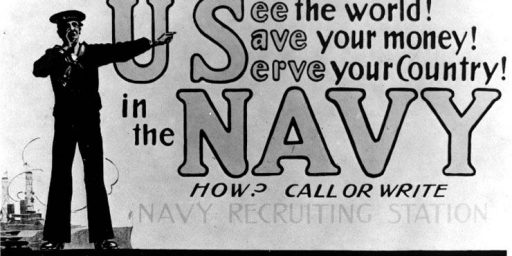$2 Million Navy Urinal Study
The House is shifting $2 million in Navy operational funds to a pet project to study flushless urinals.
House Taps Navy Fund For Urinal Study (National Journal’s CongressDailyAM, p. 1, $)
The House wants to divert $2 million in the Navy’s FY06 operations accounts to boost a rapidly growing Michigan environmental technology firm that markets itself as the “world leader for waterfree urinals.” In an unpublicized portion of the House version of the FY06 Defense appropriations bill, lawmakers added a conservation initiative that would pay for a Navy study exploring the use of “no flush” urinals. Advocates say the product could save thousands of gallons of water onboard ships and at military installations where water is scant. The initiative, which could help Falcon Waterfree Technologies expand its budding military contracting business, was added by appropriators even as they cut $2.9 billion from operations and maintenance accounts across the military services in an attempt to focus more spending on the global war on terrorism.
The budgetary add-on is illustrative of an increasing tendency in Congress to tack earmarks onto operations budgets, the accounts that typically pay for ammunition, depot repair work and other short-term military needs. While the total dollars allocated for these projects out of the operations and maintenance budget has not grown in recent years, the number of earmarks has, as lawmakers maneuver to slip funding for a broad swath of pet projects into all areas of the budget.
From 1996 to 2004, the total number of operations and maintenance earmarks in the final Defense appropriations bill has leaped from 60 to 226, even as the price tag decreased. The House and Senate versions of the FY06 Defense spending bill are not any different, budget watchers said.
“O&M is a really screwy account,” said Winslow Wheeler, a senior fellow at the Center for Defense Information and a former Senate Budget Committee analyst. “All kinds of stuff ends up in there, lots of minor procurement.”
Quite true. And hardly surprising, as noted in the update to my earlier post on pork spending.
That said, this particular allocation may make perfect sense, even though it sounds quite amusing. If in fact “the product could save thousands of gallons of water onboard ships and at military installations where water is scant,” it could well be worth a whole lot more than $2 million. What’s unclear to me is why Congress is funding the R&D rather than the contractor.






Uh…I’ve seen the flushless urinals in two federal facilities inside the Beltway, and they were all removed because of problems. Why not ask those agencies about their experiences?
Wow, a two million dollar navy is being studied at some unrinals.
Having put in four years in a boiler room and having done some plumbing for baitwells on lesser craft, it seems to me that Navy can easily flush these things with salt water being forced into the system just with the forward motion of the ship!
Ashore, this might make sense.
On the ship I was on, the urinals and toilets used saltwater. There is probably no need to conserve saltwater. The freshwater was limited to the showers and sinks, when it was on at all.
If the R & D doesn’t produce the desired results, They could always say. “Piss on it”
As Dale pointed out, our ships use saltwater for flushing, so conserving fresh water is irrelevant, unless the newer ships do use freshwater (I’ve been out of the Navy for 12 years now).
But the saltwater urinals and their discharge piping were always clogging up due to what we called “calcium buildup”, which is a by-product of mixing urine with salt.
These flushless toilets may be worth something.